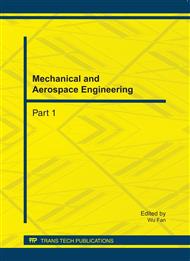p.3781
p.3786
p.3791
p.3795
p.3801
p.3807
p.3810
p.3818
p.3825
Synthesis of NanoTiO2/CTMAB-Expanded Perlite Applied to the Degradation of Methyl Orange
Abstract:
Different environmental remediation materials were prepared by using Cetyltrimethylammonium Bromide (CTMAB) and/or TiO2 to surface-modify expanded perlite (EP). Photocatalytic degradation of Methyl Orange in polluted water by these materials (CTMAB-EP, TiO2/CTMAB-EP, TiO2-EP and EP), adsorption/ degradation kinetics and relevant factors affecting degradation effects were studied. The results showed that EP had little ability to remove Methyl Orange in water, while EP modified with CTMAB and/or TiO2 could remove Methyl Orange (MO) significantly, and TiO2/CTMAB-EP treatment showed the highest removal rate in all treatments. Removal effects of the materials were influenced by dosage of material, shaking time and initial concentration of MO in water. These results indicated that nanoTiO2/CTMAB-Expanded perlite can be used as a new and promising environmental remediation material in efficient removal of organic pollutant from environment.
Info:
Periodical:
Pages:
3801-3806
Citation:
Online since:
October 2011
Authors:
Price:
Сopyright:
© 2012 Trans Tech Publications Ltd. All Rights Reserved
Share:
Citation:


